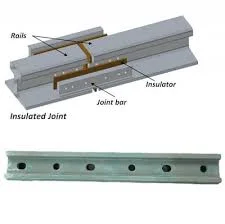Joint bar fish plates play a crucial role in connecting and reinforcing railway tracks, ensuring smooth and safe train operations. With a variety of joint bar fish plates available in the market, selecting the right one for your railway infrastructure is essential. In this blog post, we will provide a comprehensive selection guide to help you choose the most suitable joint bar fish plates for your specific needs.
Types of Joint Bar Fish Plates
There are several types of joint bar fish plates available, each designed to meet different requirements based on track conditions, traffic volume, and load capacity. Common types include bolted joint bar fish plates, welded joint bar fish plates, and compromise joint bar fish plates. Understanding the characteristics and applications of each type is crucial in selecting the most appropriate option for your railway tracks.

Factors to Consider When Selecting Joint Bar Fish Plates
1. Track Conditions
Consider the specific track conditions, such as curvature, alignment, and track geometry, when choosing joint bar fish plates. Different types of joint bar fish plates are designed to accommodate varying track conditions and ensure proper alignment and stability.
2. Traffic Volume and Load Capacity
The volume of traffic and the weight of trains running on the tracks are important factors to consider. Select joint bar fish plates that can withstand the anticipated load capacity and traffic volume to ensure safe and reliable track performance.
3. Material and Durability
The material composition of joint bar fish plates plays a significant role in their durability and longevity. Choose high-quality materials such as steel or cast iron that can withstand heavy loads, impacts, and environmental conditions without compromising structural integrity.
4. Installation and Maintenance
Consider the ease of installation and maintenance requirements of joint bar fish plates. Opt for plates that are easy to install and maintain, reducing downtime and operational disruptions on the railway tracks.
5. Compatibility and Standards
Ensure that the selected joint bar fish plates are compatible with the existing track components and adhere to industry standards and regulations. Compatibility with rail profiles, fastening systems, and track gauges is essential for seamless integration and optimal performance.
Benefits of Properly Selected Joint Bar Fish Plates
1. Enhanced Track Stability
Choosing the right joint bar fish plates helps maintain track alignment and stability, reducing the risk of derailments and ensuring smooth train operations.
2. Increased Safety
Properly selected joint bar fish plates contribute to the overall safety of railway tracks by minimizing track defects and preventing potential accidents.
3. Extended Service Life
High-quality joint bar fish plates with the right specifications and materials offer longevity and durability, reducing the need for frequent replacements and maintenance.
4. Improved Track Performance
Well-selected joint bar fish plates contribute to improved track performance, including reduced track wear, noise reduction, and enhanced ride quality for passengers and cargo.

Conclusion
Selecting the appropriate joint bar fish plates is essential for ensuring the safety, stability, and performance of railway tracks. By considering factors such as track conditions, traffic volume, material quality, and compatibility, railway operators can choose the most suitable joint bar fish plates for their specific requirements. Properly selected joint bar fish plates not only enhance track performance but also contribute to the overall efficiency and reliability of railway operations.
https://www.hbrailwayfastening.com/Selection-Guide-of-the-Joint-Bar-Fish-Plates.html


